Massachusetts has a surprising amount of good stuff buried in its soil. For a collector it’s mostly just a matter of finding out where to go looking to bring home great stones instead of returning empty-handed. While not the most geologically diverse region in the United States, there’s still a wide variety of minerals if you know where to look.
So, let’s dig down and take a look at our list of rocks, minerals, and gems found in Massachusetts.
1. Garnet
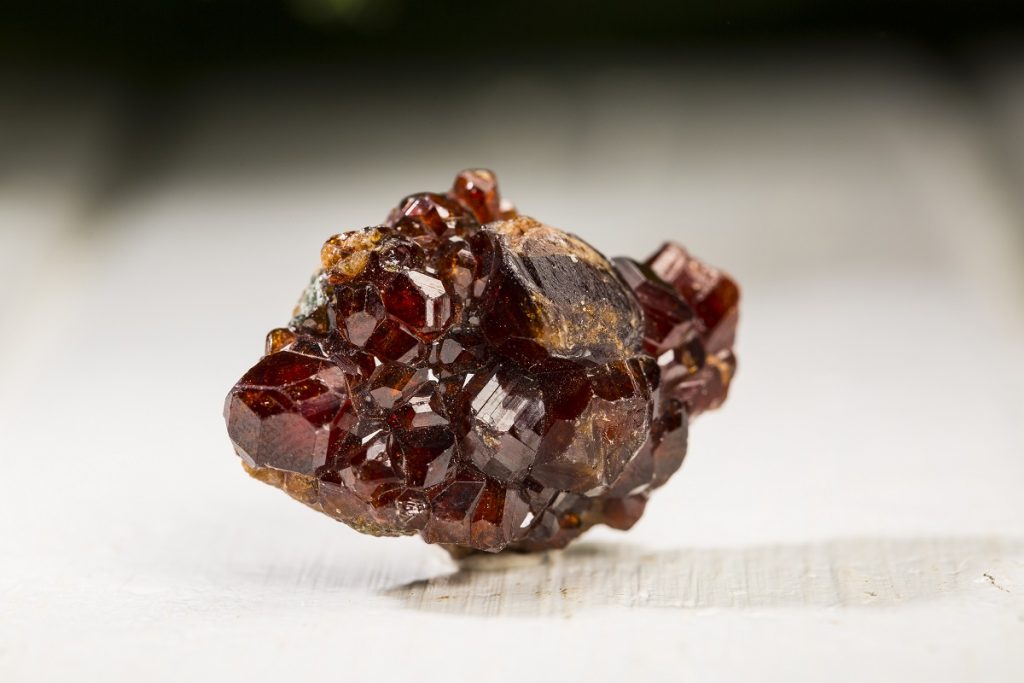
Garnet is generally associated with red gemstones, but experienced rockhounds know that’s not always the case. Indeed, the garnet family is filled with a wide variety of different colors of garnet ranging from deep red to purple to black. Even blue garnets are found occasionally, although these are vanishingly rare.
Garnets are found as dodecahedral crystals. They vary widely in quality, ranging from specimens that are almost black due to inclusions preventing clarity to high-grade gemstones as fine as any of the more valuable species. It’s all in the formation that occurs at any given location.
Garnets are found in Massachusetts with surprising variety. Almandine, spessartine, and even grossular garnets can be found in some areas. The main prize that’s sought by rockhounds, however, is Russell Garnets. These are sharply defined crystals of garnet which are found in one area. While most of the old stock is gone now, many Massachusetts-based rockhounds seek to find some of these valuable gems.
If you’re looking to find some garnets, then you’ve got a couple of choices. The obvious one is the area around the old Russell Mine which still yields specimens on occasion. You can also find them in the Betts Mining District where some paid digs still emerge. Lastly, anywhere garnets can be found you can look downstream for alluvial deposits of garnet in gravel. You can separate these with a pan if you’ve got an afternoon to kill.
2. Agate/Jasper/Chalcedony
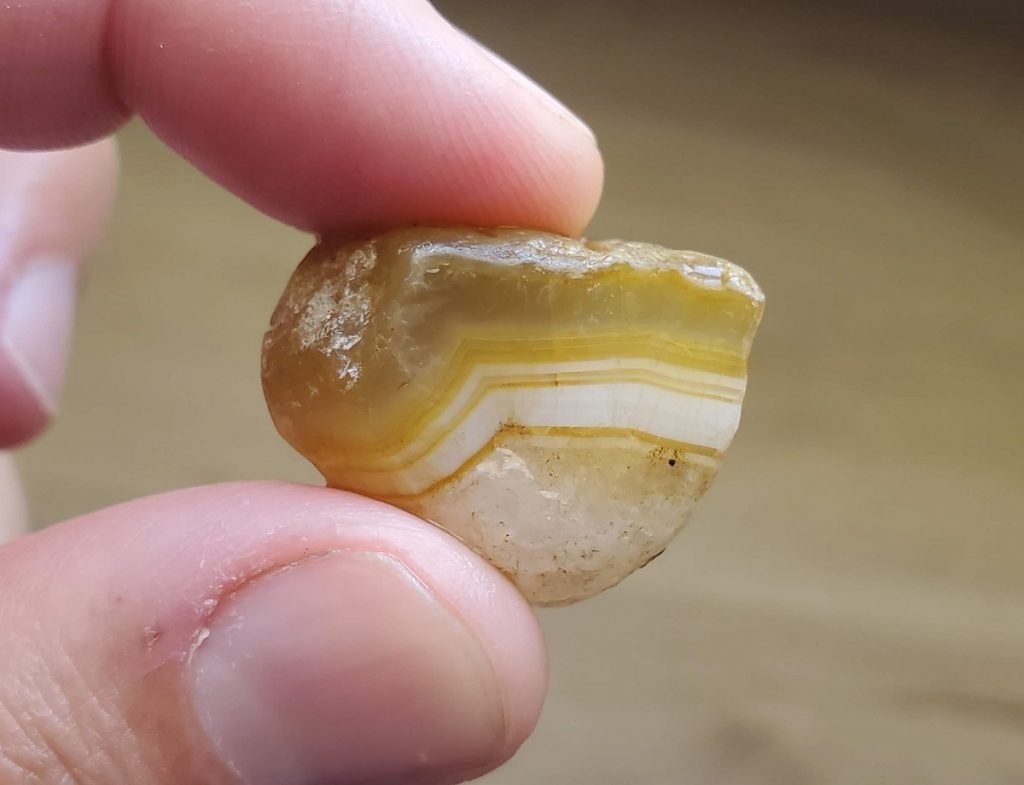
The major varieties of cryptocrystalline silica are subjects of much debate. We’ll sidestep that by lumping together these three varieties. All three are comprised of the same minerals at their base, a finely woven intermixture of quartz and its rare (as a standalone crystal) polymorph moganite. The growth is so fine that it’s impossible to see by the naked eye and very hard to see even with an incredible microscope.
The classical definitions of these three gemstones don’t really cover everything that falls underneath their banner. Agates are classically banded… except for all of the varieties that aren’t. Jaspers are classically red, except there are many varieties with no red. Chalcedony often refers to only blue chalcedony. It’s all a mess.
In Massachusetts, both agate and jasper can be found. The agates will tend towards earthier tones while the jasper is often red dominant. Neither is particularly common in New England but there are several places a rockhound can find either in the state.
The following areas are known to house these stones:
- Essex County
- Suffolk County
- Norfolk County
The streams and riverbeds in these areas are the best places to begin the search.
3. Beryl
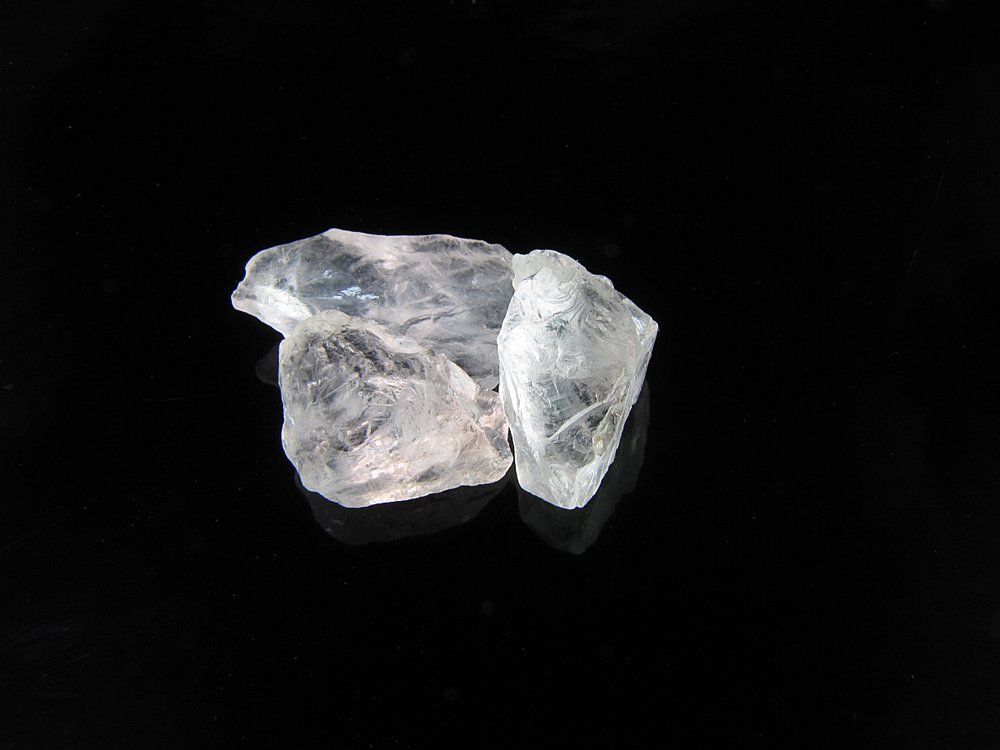
Beryl is a hit among rockhounds, whether crystal collectors or lapidaries. It’s a big gemstone family which has many different colors, but the famous ones are emerald and Aquamarine. Heliodor, bixbite, and morganite also fall under this category, all known for rich color and incredible hardness. Sitting at an 8.0 on Moh’s scale, it’s no wonder that these stones have been favored by jewelers since ancient times.
Beryl forms itself into a distinct, octahedral form. It also varies quite a bit by the area where the stone is found. Some beryl is mainly of use as a conversation piece, while a piece of beryl in the same category may also be a world-class gemstone when formed better. The cool thing about that is it makes it possible for even newbie collectors with small budgets to collect bits of emerald and aquamarine without taking out a second mortgage.
The beryl found in Massachusetts doesn’t fall into any of the previously described categories. Instead, it’s a clear form of beryl that’s usually known as Goshenite that’s actually named for the town of Goshen in the state. While lacking the gem value of many other varieties, it’s an interesting specimen and an important source of the rare element beryllium.
The area around Goshen is naturally the best place to look, with samples spread around the town and surrounding areas in Hampshire County.
4. Quartz/Amethyst
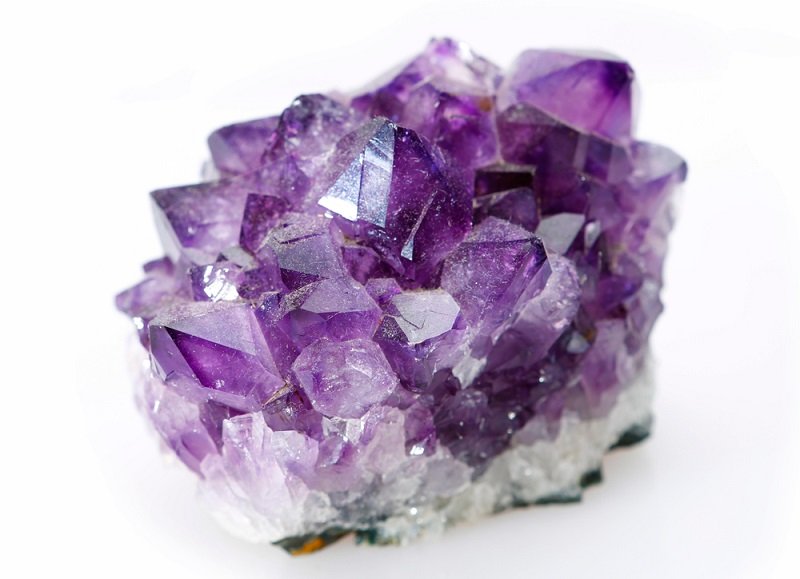
Macrocrystalline silica, commonly known as quartz, is the crystal that most people picture. Hexagonal, terminated on one side, and growing in clusters it has an iconic form, and the ready availability of quartz points in every type of souvenir shop around just enforces that point in the long run. They’re also known to form in geodes.
Amethyst is the purple form of quartz, and one of the more desirable. Colored by the presence of iron ions contained in the crystalline structure of its host quartz, amethyst has been a gemstone for as long as humans have enjoyed minerals. Indeed, before the giant Brazilian deposits were discovered amethyst was held on par with stones like ruby, diamond, and emerald.
The amethyst in Massachusetts isn’t quite up to the standards of material found in the Western Urals but it’s better than most. Many of the specimens pulled from the earth are quite purple in this region, often displaying clean crystal faces as well to make for exciting specimens.
If you’d like to collect one for yourself you have a few options:
- Hampshire County
- Plymouth County
- Norfolk County
These regions all host some pretty exciting specimens in their bedrock, making them a favorite for collectors.
5. Babingtonite
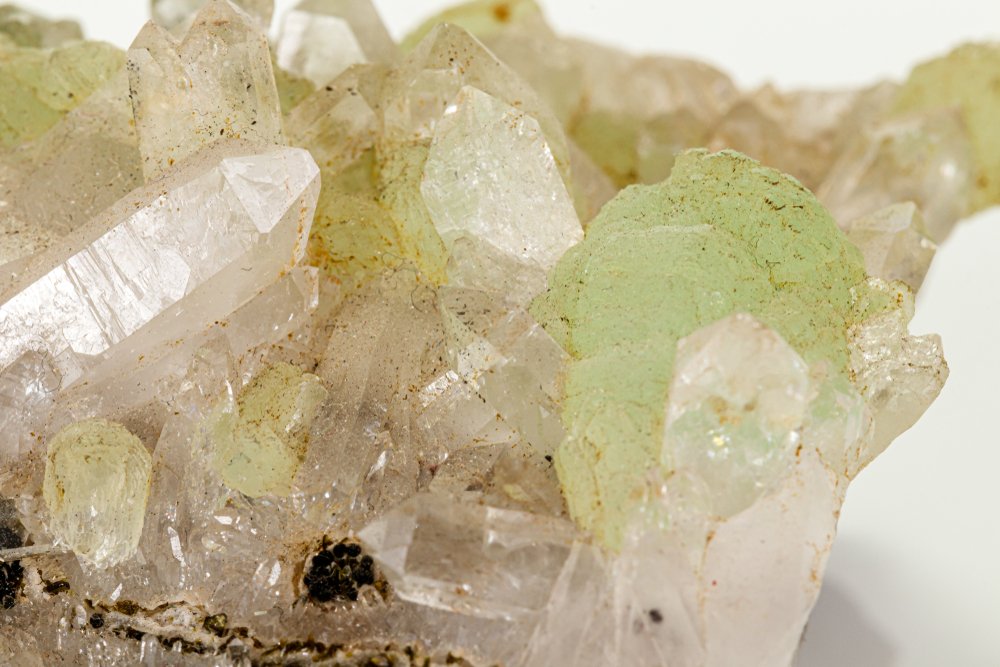
Babingtonite isn’t a name you hear often, this mineral specimen can be vanishingly rare. It’s also the state mineral of Massachusetts, which means those in the region have a chance to find some if they know where to look. This material is green-black to jet-black, has a hardness of 5.0 on the Moh’s scale, and forms in triclinic crystals. It’s also weakly magnetic, making it easy to determine if you’ve found the real thing.
Babingtonite is a strange one in the world of minerals. It’s not really suitable for use as a gemstone and it doesn’t have any properties that make it important to resource extraction or chemical engineering. This leaves it as one of the rare crystallized minerals that’s important only to the mineral collecting hobby.
Babingtonite is often associated with zeolites. Zeolites are microporous minerals that are heavy in aluminum. They’re most often used as a form of molecular sieve since some forms tend to have uniform porosity, although these have often been replaced with synthetic variants.
Those looking to acquire a sample should take a look in the following places:
- Near Westfield
- Chester Emery Mines near Chester
- Mt. Tom Quarry
These regions all host great examples of the mineral for those who are willing to find a safe and legal place to dig for it.
6. Rhodonite
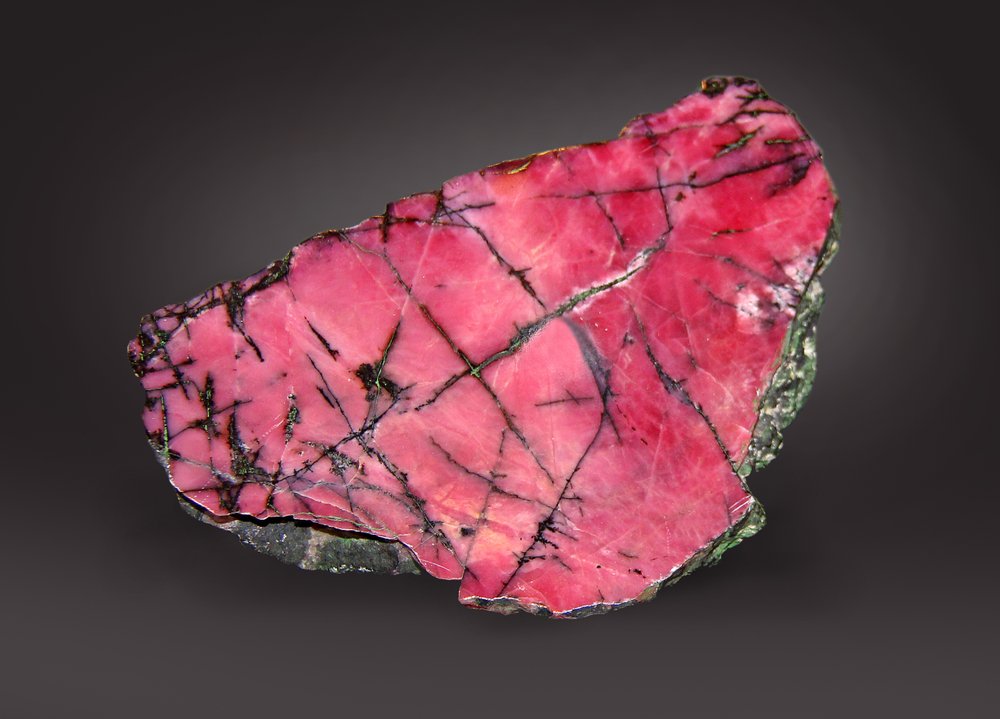
Rhodonite is a pink manganese inosilicate mineral. The material is often mixed together with manganese-rich black minerals that give the massive form a unique black and pink mottled appearance. The surface of rhodonite occasionally oxidizes, forming a brown crust on samples that have just been retrieved from the ground.
Rhodonite is the state gemstone of Massachusetts. The massive form is often cut en cabochon and placed in jewelry. It can occasionally be found as large single crystals, which are prized for their use in faceted gemstones where the pink-red color can be used to great effect. These crystals are very rare, even in the few locations where rhodonite can be found regularly.
The massive form is most common here.
Rhodonite is found in only one place in the state, the area near Plainfield. Single crystals suitable for faceting are vanishingly rare, but the more common massive black-and-pink striped version is often found here.
7. Galena
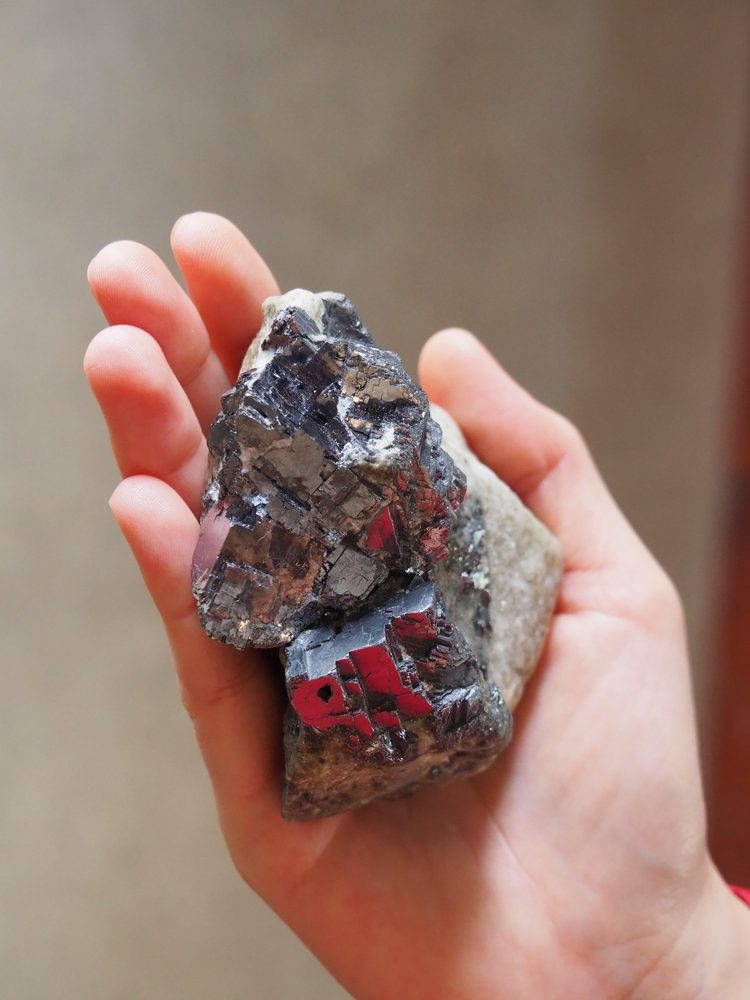
Galena is a lead ore, and one of the most important ones that can be found. It’s a form of lead sulfide, showing up with octahedral or cubic forms. While today it’s mainly used to extract lead, in the far past galena was actually used as a cosmetic. While it works well as a dark pigment, the side effects of lead poisoning are enough to turn most people off of it today.
Galena is also known as an ore of silver. Not specifically for its makeup, galena can be entirely free of silver, but because it often grows in the same hydrothermal vents and traps silver particles during formation. This form of galena is usually known as being “argentiferous.”
Much of the material found in Massachusetts is also argentiferous, although not all of it. It varies depending on locality. Galena is found across the entire state in various amounts, from the area around Pittsfield to the Atlantic Coast.
Some locations to try are the following:
- Franklin County
- Hampshire County
- Essex County
The majority of deposits have been commercially exploited at some point, so places near existing mines are your best bet.
8. Sphalerite
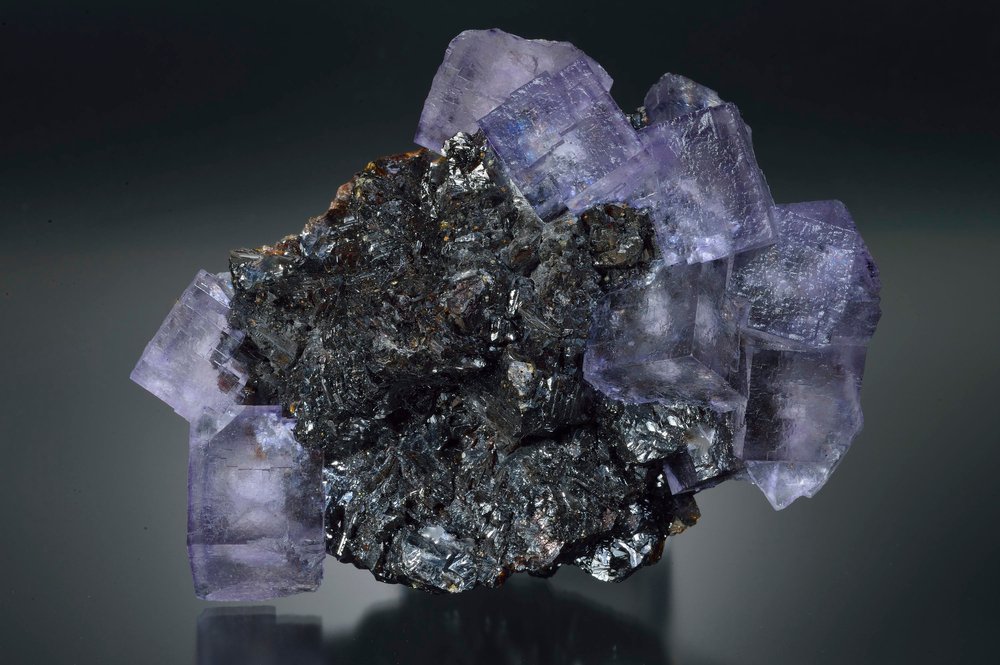
Sphalerite is the primary ore of zinc. It’s not a metal that most of us think about much, but it’s in a lot of surprising places. Zinc is the coating used on galvanized steel, for instance, and it’s also used in the manufacture of very common alloys used in everyday life. You might, for instance, recognize brass.
Sphalerite occurs as red to black crystals with a euhedral form or scattered as smaller pieces in bedrock. While very soft, high-grade sphalerite is sometimes cut as gemstones. These aren’t a great option for jewelry, running only a 3.5-4.0 on the Moh’s scale, but instead are meant for the collector market. It’s also sold as mineral samples.
Fortunately for would-be collectors, sphalerite often co-occurs with galena in the same region. This is the case in Massachusetts, where sphalerite and galena often appear alongside each other. This makes things easy since sphalerite is also spread across a wide portion of Massachusetts.
If you’re looking to find a sample for yourself you can look in the same counties listed above as places to find galena. That said the best samples seem to come from Hampshire County.
9. Pyrite
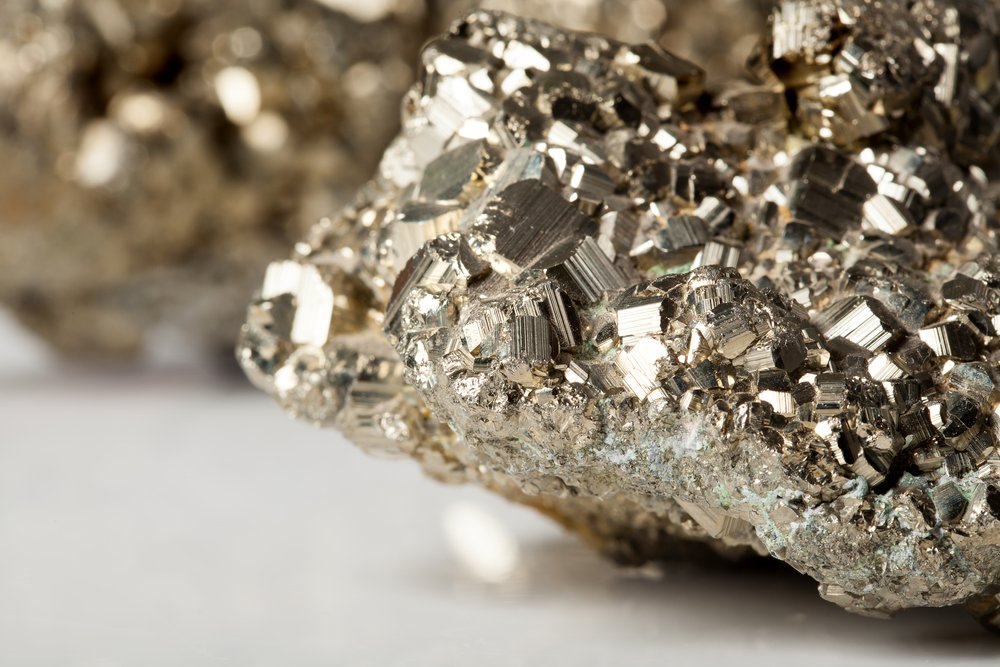
Pyrite is iron sulfide, a common mineral that has a variety of habits. The most common form of pyrite is undoubtedly the Fool’s Gold of past centuries. In this case, the material is often spread across the surface of a rock as small crystals, giving it a brassy shimmer that can appear to be gold to the untrained eye.
It would take a real greenhorn to mistake larger formations of pyrite for gold, since gold doesn’t form into large, cubic crystals that stack on top of each other. That said, there is often some level of gold contained in the crystalline structure of pyrite. Recent discoveries point to the idea that pyrite can trap nanoparticles of gold in its crystal matrix and end up being up to 0.25% gold by weight.
That may not sound like a big percentage, but it’s huge for gold ore. The pyrite in Massachucetts is usually found in small crystals although larger samples are found on occasion. It can also be found co-occurring with quartz crystals in the state, making for impressive samples.
Like most sulfide minerals, pyrite occurs in places where there were old hydrothermal vents. While it’s spread across Massachusetts in large amounts, the best samples will be found in the same areas with heavy amounts of Galena and Sphalerite.
That makes finding a place to look simple, and also means there’s going to be plenty to find in the best spots!
- Online rock and mineral club for collectors of all levels!
- Find community with like-minded rock and mineral enthusiasts.
- Monthly Giveaways!
- Free Access to Entire Digital Library of Products (current and future products)*


